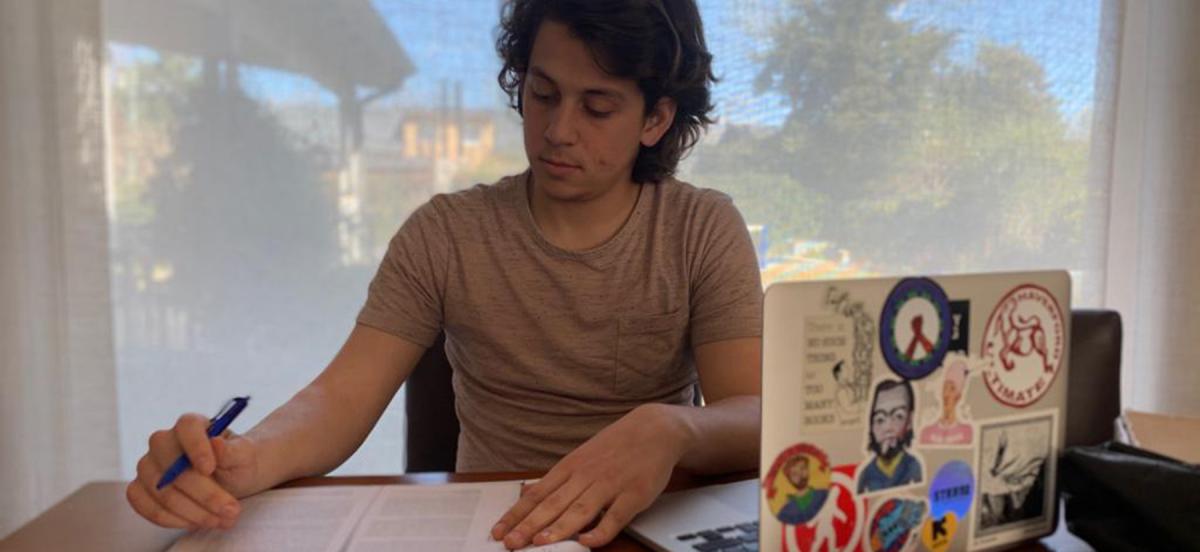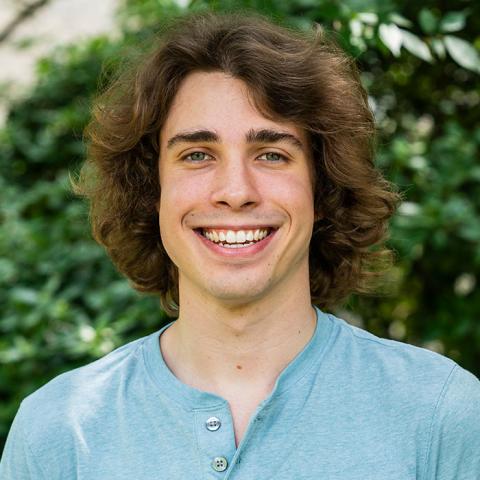Summer Centered: Federico Perelmuter ’21 Pieces History Back Together

Federico Perelmuter ’21 spent his summer conducting independent research in Argentina’s National Archive of Remebrance.
Details
The English major conducted bibliographic research and explored Argentina’s national archives to understand how photography can be used to falsify, erase, and manipulate the legacies of large-scale oppression and state-sponsored terrorism.
As technology has evolved, photographs and videos have become dominent sources of recording history. Sponsored by the John B. Hurford ‘60 Center for the Arts and Humanities, English major Federico Perelmuter ’21 spent his summer conducting independent research regarding how these supposedly objective methods can be manipulated to support inaccurate and ideologically motivated historical narratives.
Perelmuter is studying the relationship between history and photography as a way of exploring the consequences and legacy of state-sponsored terrorism in Latin America during the 1970s. Because of the project’s scope, he had to synthesize both bibliographic and archival research.
“I spent the first three weeks of my internship doing archival research at the National Memory Archive in Buenos Aires,” said Perelmuter. “Since then, I've been mostly doing bibliographical research and accumulating sources to gather a sufficient basis in the fields of memory studies and photographic theory.”
For the archival portion of the project, Perelmuter examined photographs of disappeared people that have been preserved and stored in the archive of Argentina’s National Commission for the Disappearance of People (CONADEP). This work caused him to consider what understandings of history and memory can be conveyed through photography as well as how the archive relates to other social modes of remembering.
“I am looking at the very reduced subset of cases in the CONADEP archive that contain images of the disappeared and thinking about the ways in which memory, identity, violence, and photography have become inseparable in the past 70 years or so—both in the wider societal efforts to commemorate atrocities such as these, marches and the like, and within the archive itself,” said Perelmuter.
This archive is part of Argentina’s National Archive of Remebrance, which is housed inside of a former Clandestine Detention Center, where countless victims of state-sponsored terrorism were held, tortured, or disappeared. The building is located in one of the busiest areas of Buenos Aires, which Perelmuter says makes it a peculiar monument to the invisibility of the violence it memorializes.
“Working in a building with such a despicable history for three weeks really challenged me to think of memory as something done materially and daily, socially and individually, by reclaiming—and in this case working from—the locales of the horror,” he said.
He was drawn to this particular archival approach because of the gaps he noticed in contemporary scholarship on state-sponsored terrorism in 1970s Argentina.
“I found that few literary experts have tried to make sense of the archival remains of state-sponsored terror, instead centering their focus on the artworks that evoke it in some way,” said Perelmuter. “Because I wanted to get to the root of what we could say about the horrors that took place in Argentina, it seemed archival work was a great entry point into thinking about the ways we remember the most shameful and horrifying aspects of our past.”
For Perelmuter, the project cuts to the core of how stories are passed down through time. By using his academic and research skills to investigate the processes that make history in the wake of conflict and terrorism, Perelmuter hopes to have an impact on how people understand the importance of transparent in the production of historical narratives.
“If this experience changed anything," he said, "it is my understanding of the importance of academic work that seeks to intervene in the ways we can understand the world.”
“Summer Centered” is a series exploring our students’ Center-funded summer work.




